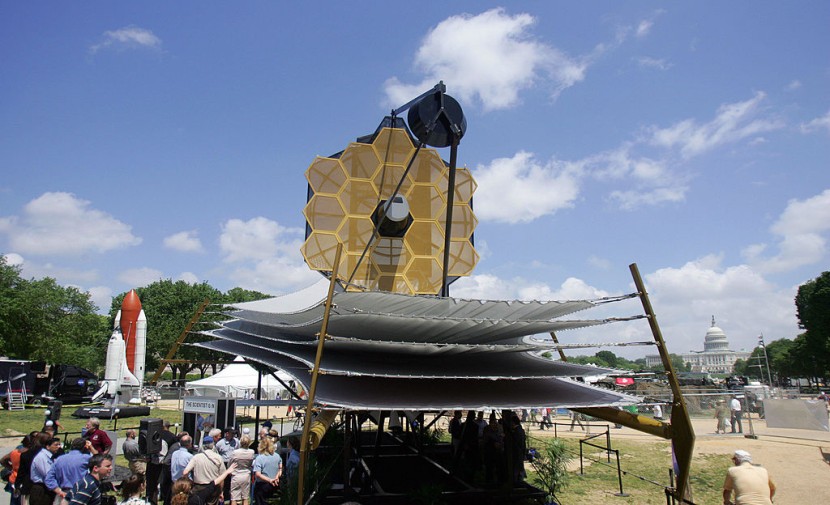
A smudged image from NASA's James Webb Telescope has been received, showing 18 separate blobs of brightness not being perfectly aligned.
As a result, the image is not just a significant step forward in the development of a telescope that might one day unveil the universe's early history and seek for habitable alien planets. It is also a vital aspect of the telescope's alignment and focusing since engineers will utilize it to correctly set up the telescope's vision of the cosmos so that study can begin.
NASA's James Webb Space Telescope Sees Its First Star
NASA's engineers will modify the telescope over the next month or two to make those 18 dots blend into one, as per The Independent. After years of delays and decades of construction, the $10 billion Webb telescope was launched on Christmas day and spent the following month traveling 1.5 million kilometers to its operational orbit.
Bonus image! When it’s time to focus, sometimes you need to take a good look at yourself.
— NASA Webb Telescope (@NASAWebb) February 11, 2022
This “selfie” taken by Webb of its primary mirror was not captured by an externally mounted engineering camera, but with a special lens within its NIRCam instrument. #UnfoldTheUniverse pic.twitter.com/XtzCdktrCA
The enormous telescope had a busy month, slowly and painstakingly unfolding its mirrors and solar panels, which had been folded origami-style for launch on an Ariane 5 rocket. On January 24, Webb arrived at Lagrangian Point 2, a region of space where the Earth's and Sun's gravitational fields cancel out, allowing Webb to circle the Sun while always maintaining Earth at his back.
The enormous telescope's commissioning phase began with ground operators aligning the 18 beryllium mirror pieces that make up Webb's 6.5 meter main mirror, which is the biggest diameter mirror ever flown in space.
To begin the alignment procedure, Webb was directed toward 156 places in the sky where operators believed a single star might be imaged, an area of sky around the size of the full Moon. Over the course of more than 24 hours, the telescope captured over 1,500 photos and stitched them together to create a massive 2 billion pixel image.
Read Also: Australia: Lovable Koala Bears Now Endangered Because of Land Clearing, Bushfires, Drought
Why Is NASA's Star Image Blurry?
Per SCMP, Webb's initial search covered an area of sky almost the size of the full moon, but the dots were all clustered towards the center, indicating that the observatory is already in a good position for final alignment. To help in the procedure, the crew took a "selfie" using a customized lens on board NIRCam rather than an externally placed camera. NASA had previously stated that a selfie would not be feasible, thus the revelation comes as a pleasant surprise to space enthusiasts.
By the summer, Webb will have started its research mission, which will entail utilizing its high-resolution equipment to look back 13.5 billion years to the first generation of galaxies that formed after the Big Bang.
The universe's expansion has stretched visible and ultraviolet light generated by the very first bright objects, resulting in infrared, which Webb is equipped to detect with unparalleled clarity. Its goal also involves determining the genesis, evolution, and habitability of faraway planets known as exoplanets.
In a mosaic produced by NASA, the telescope's initial star appears 18 times. It may appear a little disorganized, but it's a sign that Webb is working well. Because the mirrors aren't aligned yet, the star seems to be spread over the mosaic. "The team will gradually tweak the mirror segments until the 18 pictures become a single star over the next month or two," NASA stated.
NASA also published a main mirror selfie captured by a unique lens inside the NIRCam instrument, in addition to Webb's first star. It's a fantastic additional shot and a rare look at a mission that didn't have a selfie camera on board, according to CNET.
Related Article: Potentially Hazardous Asteroid Twice the Size of Empire State Building Passing By Earth on Tuesday
@YouTube
© 2025 HNGN, All rights reserved. Do not reproduce without permission.








